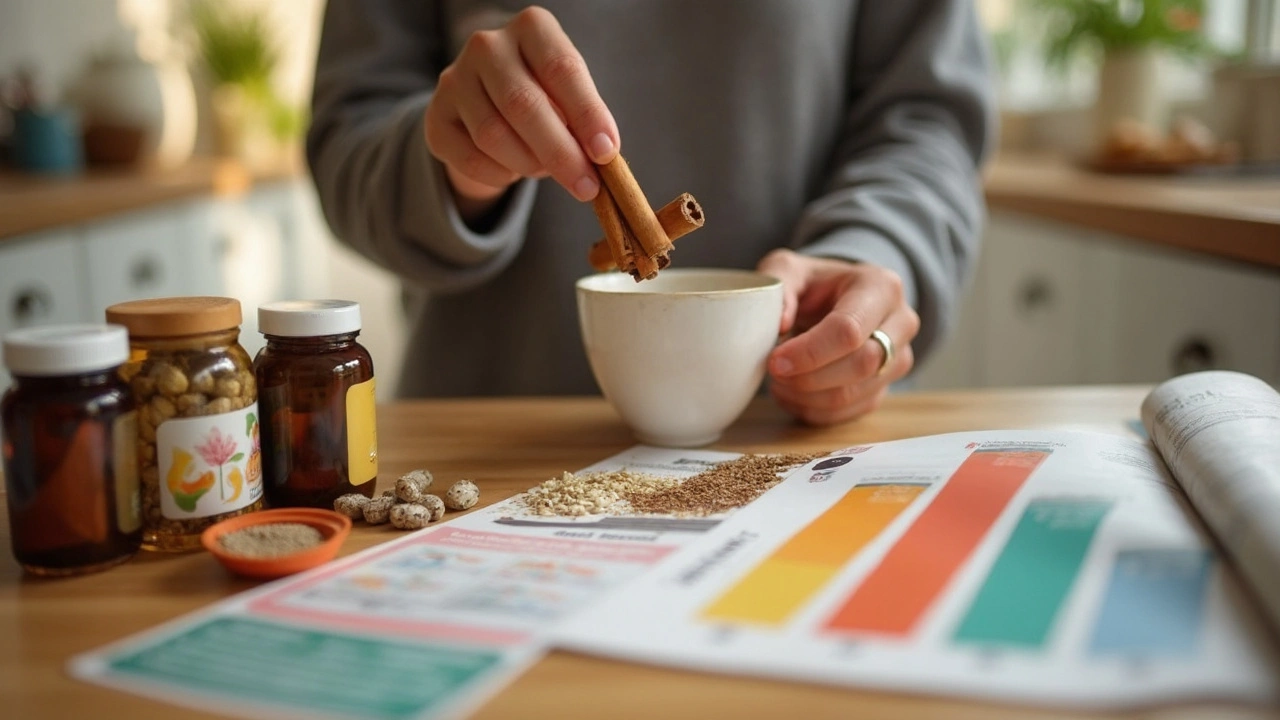Glycemic control
High blood sugar doesn't always feel obvious, but it affects energy, mood, and long-term health. If you're trying to keep glucose in check, the goal is simple: reduce big swings and keep average levels steady. That lowers risks for complications and helps you feel better day to day.
Practical daily habits
Start with food. Carbohydrates raise blood sugar most quickly, so focus on quality and timing. Pick whole grains, beans, vegetables, and fruit instead of white bread, sugary drinks, and sweets. Combine carbs with protein and healthy fats—this slows absorption and avoids sharp spikes. For example, swap a doughnut for Greek yogurt with berries and a handful of nuts.
Portion control matters. You don’t need to cut out carbs completely—just keep portions consistent. Use your plate as a guide: half veggies, a quarter lean protein, and a quarter carbs. If you use carb counting, aim for similar carb amounts each meal to make dosing insulin or medication easier.
Move more. Even short walks after meals lower post-meal glucose. Aim for about 30 minutes of moderate activity most days—strength training twice a week also helps because muscle uses glucose. You don’t need a gym; stair climbing, brisk walking, or a resistance band session works well.
Sleep and stress change blood sugar. Poor sleep raises insulin resistance and stress hormones, both of which push glucose up. Try a consistent sleep schedule, limit late caffeine, and use simple stress tools—breathing, short walks, or 10 minutes of stretching.
Hydration and alcohol matter too. Drink water regularly—dehydration can concentrate blood sugar. If you drink alcohol, do so with food and know it can cause low blood sugar if you take insulin or some diabetes medications.
Monitoring, meds, and when to get help
Track trends, not single readings. Fingerstick checks or a continuous glucose monitor (CGM) help you see patterns after meals, exercise, and sleep. Your target numbers depend on your age and health, but many aim for fasting glucose around 80–130 mg/dL and post-meal under 180 mg/dL—confirm targets with your clinician.
Medications and supplements can help, but they’re tools, not fixes. Metformin often starts first for type 2 diabetes; newer drugs can lower A1c and offer heart or kidney protection. If pills or insulin cause frequent lows or don’t reach targets, talk to your prescriber about adjustments.
See your doctor when patterns change—if A1c stays high despite lifestyle changes, if you have frequent highs or lows, unexplained weight change, or symptoms like excessive thirst or blurred vision. Early action prevents problems later.
Small, steady changes beat dramatic fixes. Pick one habit to improve this week—walk after one meal, swap a sugary drink for water, or add a lean protein to breakfast. Those little wins add up and make glycemic control manageable and real.

Best Herbal Metformin Alternatives: Cinnamon, Fenugreek & More for Blood Sugar Control
This article dives deep into the clinical evidence behind using common botanicals like cinnamon and fenugreek as natural alternatives to Metformin for managing blood sugar. It unpacks the science, real-world experiences, and useful tips on effective herbal supplements, and guides readers through what to expect if they're considering such substitutes. Enjoy an engaging, fact-filled read with practical advice and reliable information for anyone interested in natural glycemic control options.
- Health and Wellness (58)
- Drug Information (45)
- Pharmacy Information (19)
- Medical Conditions (17)
- Supplements (4)
- Travel Health (2)
- Parenting (2)
- Diabetes (2)
- Mental Health (2)
- Heart Health (1)
-
DPP-4 Inhibitors and Joint Pain: What You Need to Know
23 Dec 2025 -
Boost Your Health with Sweet Gale: The Must-Have Dietary Supplement for 2021
31 Jul 2023 -
Montelukast for Allergic Airways: How Leukotriene Inhibitors Work and When They’re Used
20 Dec 2025 -
Sarcopenia: How Strength Training Slows Age-Related Muscle Loss
10 Dec 2025 -
The Role of Genetics in Gouty Arthritis: Are You at Risk?
2 Jun 2023

29.04.25
Alistair Mukondiwa
11